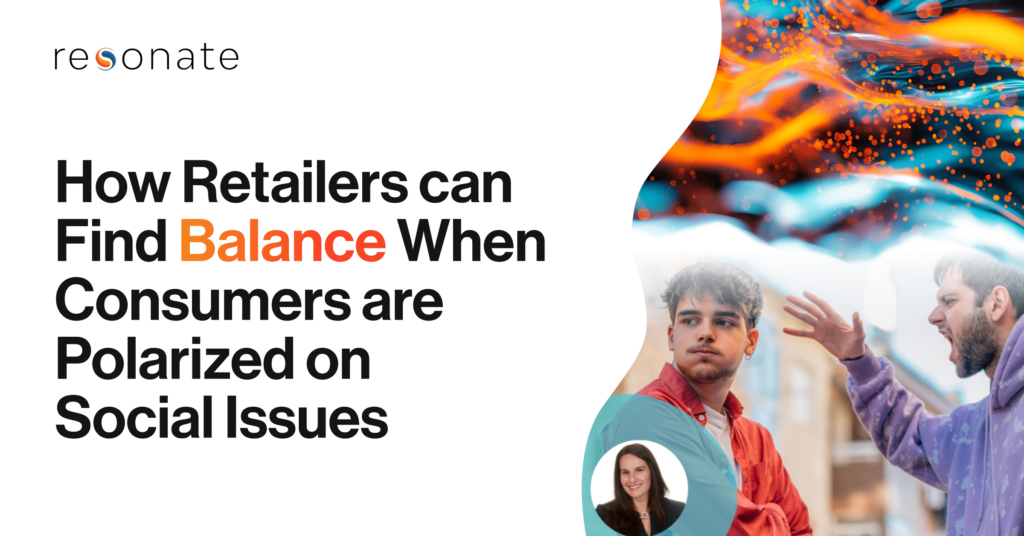For decades, a brand’s understanding of the emotional drivers of its customers, and its ability to foster a relationship based on this understanding, has driven success for many of the world’s leading brands such as Apple and Coca-Cola. Facebook’s recent launch of “Reactions” to add greater depth behind the “Like” button shows how the digital universe is now beginning to try and capture (measure) data about consumers and their current emotional state.
In the rush, however, to make our digital understanding of consumers more sophisticated, it is important that we don’t mis-use emotional insight as the primary driver which defines an audience.
As recent research has shown, commercials and branded content programs that pull at heartstrings can be highly effective.
So it’s no surprise that marketers increasingly look toward emotions as the core kernel that drives consumer decisions. Derrick Daye, Managing Partner and Brand Consultant at The Blake Project, discussed how according to recent branding study, upwards of 50% of purchase decisions are based on emotion, and in some categories much higher. With vodka, this reached up to 90%. This provides stark contrast to what they found in in blind vodka taste tests: 9 out of 10 times participants chose Smirnoff over Grey Goose. Although participants clearly prefer how Smirnoff tastes, Grey Goose garners premium pricing and popularity at social venues—this clearly illustrates that consumers consider other factors such as emotional connection to drive their purchase decisions.
However, while marketers increasingly seek to understand this emotional connection to their brand, it’s shared values that create and amplify emotional connections between consumers and brands. Beyond emotions, well understood motivations can far more effectively drive all aspects of marketing strategy, from planning through execution.
Emotions Are Ephemeral
Emotional states are the most volatile representations of psychographics, with a shelf life of about 12 minutes. So, even as platforms such as Facebook begin to to capture users’ self-reported emotional states along with their posts, it is incredibly difficult to activate this understanding as a mechanism of identifying customers or prospects around which to build a marketing strategy. Trying to make decisions based upon the emotions of consumers, or trying to find them at the time they are in a particular emotional state, is like trying to guess if someone is a fit for your brand based upon the smile or frown expressed on their faces without any context.
The Next Level of Understanding: Motivations
Underlying values and motivations describe and give insight into how an individual looks at the world, and this is what ultimately informs a consumer’s decision-making. Motivations of an individual are much longer-lasting, enduring for at least months; likewise, the values of consumers do not change overnight – they remain true for years.
In this light, emotions become more of an indicator as to whether the consumer has attained their desired state. For example, Nielsen reported that “55% of consumers are willing to pay extra for products and services from companies committed to making positive social and environmental impacts.” Along this vein, Patagonia’s global marketing strategy revolves around their core value proposition—that lasting products would enable their customers to live in a more environmentally responsible way. As a result of their ‘anti-growth’ strategy, Patagonia sales skyrocketed. In 2012, a year after Patagonia began appealing to consumers to buy less, sales increased almost one-third, to $543 million. The following year, the company’s revenue increased another 6% to $575 million.
Here, we could see how a brand’s goal of accomplishing a specific emotion—by satisfying underlying values that make up their beliefs—led to successful results.
Implications to Marketing Execution
From an execution perspective, emotion can be used similarly to behavioral targeting data. However, this approach still lacks an understanding of why and how people will make decisions and what decision they will make to buy or not buy your product.
Chevrolet has built its brand around “Patriotism,” leveraging a constant drumbeat of Americana imagery and ‘built in America’ messaging. Likewise, Volvo has built its brand around the core value of ‘Safety for Family,’ and seeks to align itself with those who are willing to trade lower price, or sleeker design, for leading edge protection of their loved ones. In each case, the resulting joy, or happiness, or calm that is experienced when the new car is purchased that satisfies this core value is an expression of successfully attaining the desired state of being.
While Facebook has no cute emoticon for “I prefer cars that are safe and energy efficient” or “I prioritize attaining my goals over time with family and friends,” these characteristics are central to understanding consumers. Today, this information is eminently accessible to advertisers and marketers.
For the vast majority of brands trying to build long-lasting relationships with their customers, marketers need an intimate understanding of the brand’s values and motivations. Only then can they harness this knowledge to develop a strategy that reaches consumers who are tightly aligned with the brand. From an executional perspective, values and motivational knowledge should drive a brand’s marketing strategy upfront; then demographic, behavioral, and emotional attributes can serve as additive layers that deliver a richer marketing campaign.



